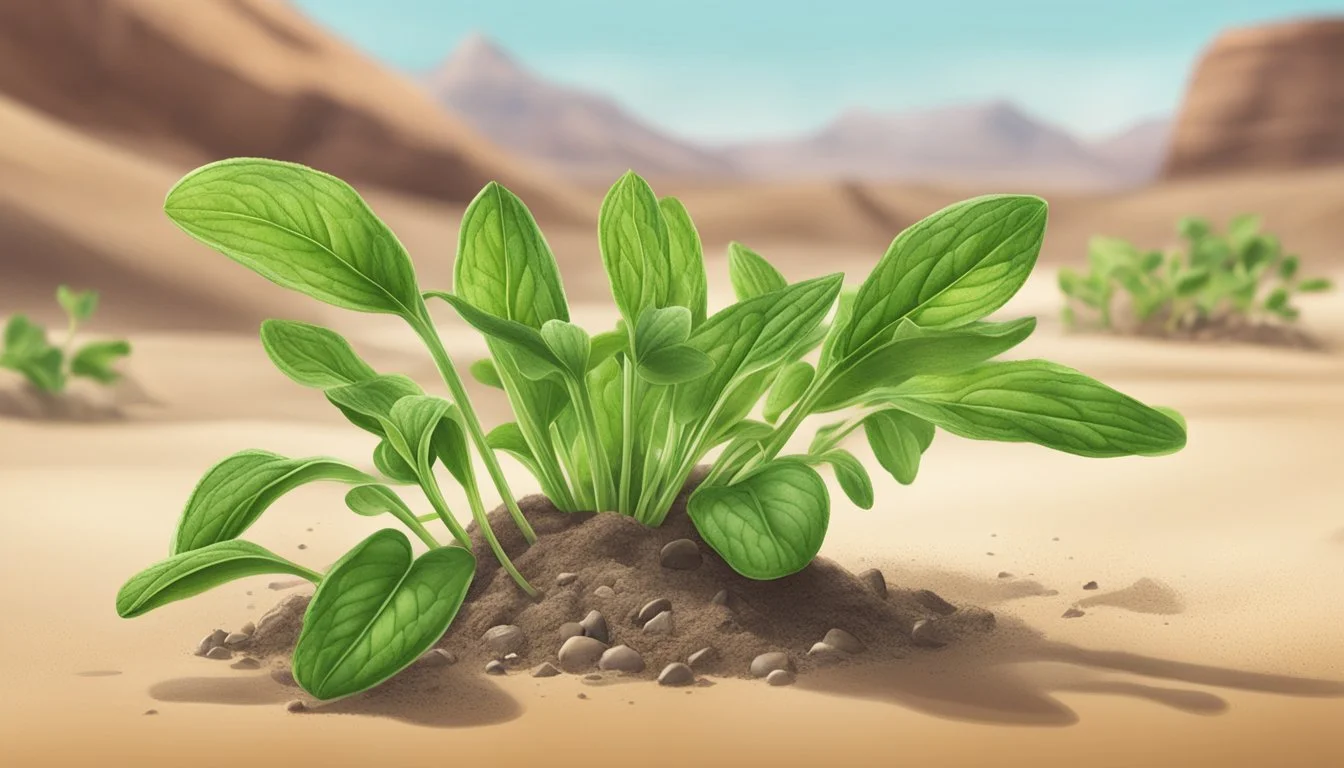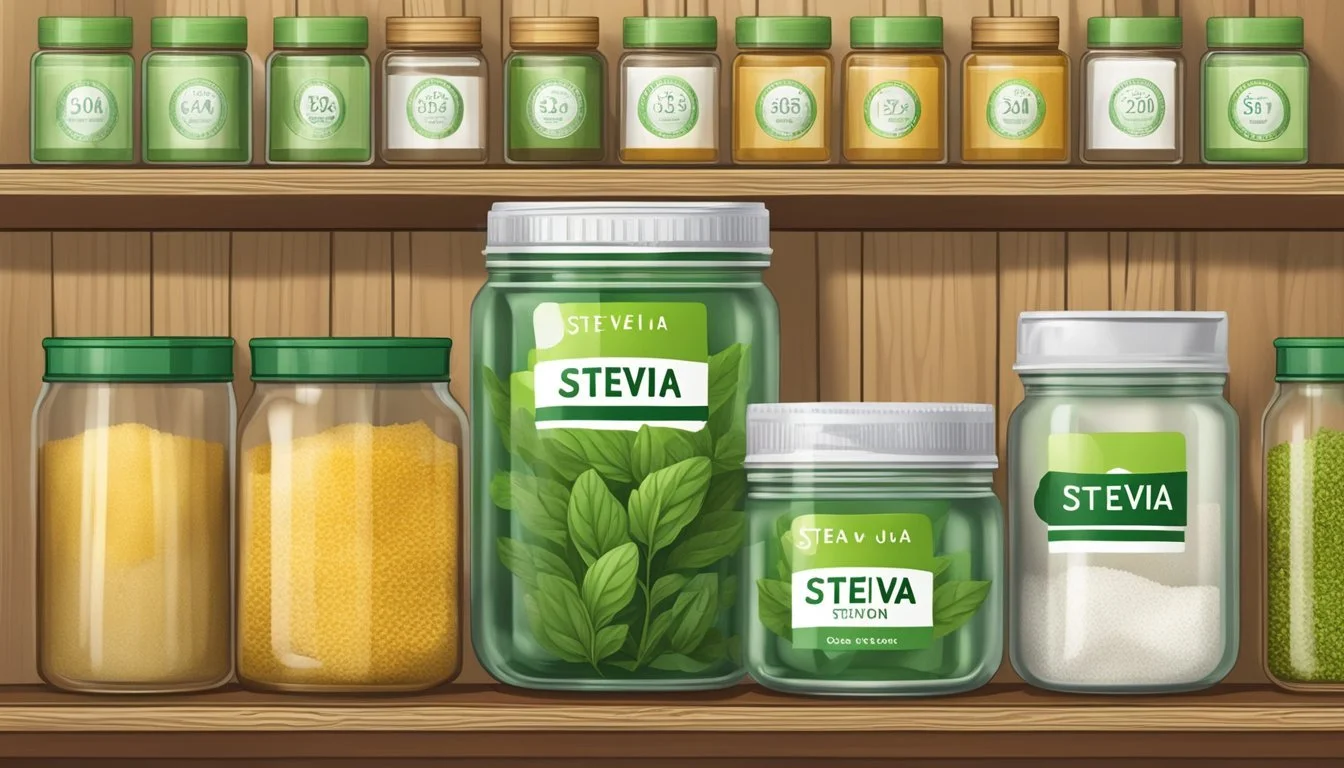How Long Does Stevia Last?
Understanding Its Shelf Life
Stevia, a popular natural sweetener, is derived from the leaves of the Stevia rebaudiana plant. It has gained much attention as a calorie-free substitute for sugar, ideal for those monitoring their sugar intake or managing diabetes. Its unique composition allows it to sweeten foods and beverages while offering a longer shelf life than many traditional sweeteners.
The shelf life of stevia, whether in liquid, powder, or granulated form, typically extends for several years due to its stable nature. Though individual products may vary, commercial stevia is often expected to remain in good condition for up to three years from the manufacturing date. Additionally, stevia can retain its quality for a period beyond its printed expiration date when stored appropriately, reassuring consumers about its longevity.
Understanding proper storage methods is crucial to maintain stevia's freshness and efficacy. Stevia's longevity is reliant on conditions that limit its exposure to moisture and extreme temperatures, as these can negatively impact its texture and sweetening properties. Thus, correct storage not only extends its usability but also ensures that its sweetening capabilities remain consistent over time.
What Is Stevia?
Stevia is a zero-calorie natural sweetener extracted from the leaves of the Stevia rebaudiana plant. This sweetener is known for its ability to substitute sugar without the added calories, influencing blood sugar or weight.
Origins and Botanical Background
Stevia rebaudiana belongs to the chrysanthemum family and is native to South America. It has been used traditionally for centuries by the indigenous people to sweeten beverages and for medicinal purposes.
Types of Stevia Products
Stevia products vary from raw leaf extract to refined forms, including:
Stevia Powder: Dry stevia leaves ground into a fine powder.
Stevia Liquid: A concentration of stevia in a liquid form.
Pure Stevia: Highly refined stevia extract, often available in packets.
Stevia Blends: Combinations with other sweeteners like sugar alcohols.
Health and Dietary Benefits
Stevia's zero-calorie nature makes it popular among those looking to reduce calorie intake for weight loss or manage diabetes, as it does not cause a spike in blood sugar levels.
Regulatory Status
The FDA has not approved whole-leaf stevia or crude stevia extracts for commercial use due to concerns about control of blood sugar and effects on the reproductive, cardiovascular, and renal systems. However, it has labeled certain high-purity steviol glycosides as Generally Recognized as Safe (GRAS).
Comparison to Other Sweeteners
Stevia stands out as a natural alternative to artificial sweeteners and sugar alcohols, being up to 300 times sweeter than sugar. It does not share the potential metabolic effects that some artificial sweeteners may have.
Side Effects and Risks
Despite stevia's benefits, some individuals may experience side effects like bloating, stomach upset, or allergic reactions. Uncommonly, stevia may lower blood pressure or affect blood sugar control, hence requiring monitoring by individuals with these conditions.
How to Store Stevia?
Proper storage of stevia is critical to maintain its sweetness and extend its shelf life. Whether in leaf, powder, or liquid form, stevia requires specific conditions to ensure its longevity and quality.
Short-Term Storage
For day-to-day use, stevia should be stored in a cool, dry place such as a pantry or cupboard. Keeping it in an airtight container or jar is essential to prevent exposure to moisture and other contaminants. Stevia packets are best kept in their original packaging until needed, but transferring them to a sealable container can help maintain freshness once the packet is opened.
Long-Term Preservation
When considering long-term storage conditions, stevia can benefit from refrigeration, especially in areas with high humidity. However, for powdered and leaf stevia, dry storage away from fluctuating temperatures often suffices. Freezing is not recommended, as it can introduce moisture and condensation, leading to clumping and degradation of the sweetener.
Effects of Temperature and Humidity
Stevia's shelf life is heavily influenced by the storage conditions, particularly temperature and humidity. It thrives in environments that are consistently cool and have low humidity to prevent the growth of mold and bacteria. Proper air circulation is also crucial to avoid moisture buildup. Avoiding exposure to direct sunlight and heat sources will further protect stevia from spoilage and loss of potency.
Shelf Life of Stevia
Stevia, known for its sweetening properties without the calories of sugar, has an impressive shelf life ranging up to two to three years. However, several factors, such as whether the stevia is opened or unopened and the storage method, influence its longevity and freshness.
Unopened vs. Opened Packages
Unopened packages of stevia typically last longer than opened ones. Unopened stevia can maintain its quality for up to three years, while opened packets should be used more promptly to preserve freshness. Once opened, air exposure can potentially shorten its shelf life.
Signs of Spoilage
Spoilage signs in stevia include:
Visual changes: Caking, clumps, or any lumpy texture.
Odor changes: An off smell indicates spoilage.
Mold: Any visible mold growth is a clear sign of contamination.
Impact of Storage Methods
Storage conditions have a significant impact on the life span of stevia:
Pantry: A cool and dry pantry is ideal for both stevia leaves and processed forms like powders and liquids.
Refrigeration: Generally unnecessary for stevia products.
Airtight container: Transferring stevia into an airtight container can extend its usability, especially after opening.
Stevia in Various Forms
Shelf life varies slightly between different forms of stevia:
Stevia leaves: Dried leaves should be stored in a dry, cool place and can last for several years.
Stevia powder: Also has a shelf life of about two years when stored properly.
Liquid stevia: Similar to powder, it can last up to three years.
Extending Stevia's Shelf Life
To prolong the shelf life of stevia:
Airtight containers: Always use these for storage after opening.
Dry spoons: Only use clean, dry utensils to prevent introducing moisture.
Avoid humidity: Keep stevia away from humid areas to prevent caking and clumping.
Do not freeze: Freezing is not recommended as it may lead to moisture buildup upon thawing.
Using Stevia in Food and Beverages
When incorporating stevia as a sugar substitute, it is essential to understand its distinct characteristics and its application in cooking, baking, and as a beverage sweetener, with attention to its interaction with other ingredients.
Cooking and Baking with Stevia
When using stevia in cooking and baking, one must consider its sweetness potency, which is significantly higher than that of sugar. As a plant-based sweetener, it can be used by individuals managing diabetes due to its minimal impact on blood glucose levels. The ratio typically applied is one teaspoon of stevia for every cup of sugar, but this can vary based on the brand and product form. It's important to note that stevia does not caramelize or react chemically like sugar, which may affect the texture and browning in baked goods. An additional ingredient, such as erythritol, often supports better results.
Stevia as a Beverage Sweetener
Stevia is frequently found in teas and other beverages as a zero-calorie sweetener. Because of its potency, only a small amount is necessary to achieve the desired sweetness. Liquid stevia is particularly convenient for sweetening drinks due to its ease of dissolving. For those with diabetes or for individuals seeking a low-calorie alternative, stevia offers a sweet taste without adversely affecting blood sugar levels.
Mixing Stevia with Other Ingredients
In certain recipes, combining stevia with ingredients like maltodextrin or dextrose can help mimic the volume and texture sugar typically provides. This is particularly useful in baking, where sugar provides structural importance. These bulking agents also help to measure stevia more accurately, as it is far more concentrated than sugar. When used in liquids or stevia-based drinks, it is best mixed with a thorough stirring to ensure an even distribution of sweetness without clumps. Mixing stevia with other sweeteners can balance the overall flavor profile, reducing the likelihood of a bitter aftertaste that can sometimes be associated with stevia-based sweeteners.
Additional Considerations and Tips
When incorporating stevia into your diet, it's vital to understand both its functional properties and how it interacts with other aspects of health and nutrition. This will ensure you're using stevia safely and effectively.
Understanding Stevia Blends
Stevia blends, such as Truvia and Stevia in the Raw, often contain other ingredients like erythritol and dextrose to improve taste and functionality. Safety is not a major concern with these blends, but one should read labels to understand calorie content, as additives may contribute to the total.
Impact on Weight and Blood Glucose Control
Using stevia can be a valuable strategy for weight control, as it has zero calories and does not raise blood glucose levels significantly. This can be beneficial for those aiming to lose weight or manage diabetes, as it may help in controlling calorie intake and maintaining stable insulin levels.
Handling and Measuring Techniques
Proper measuring of stevia is crucial, especially because it is substantially sweeter than sugar. Most brands provide dosing guidelines; for example, SweetLeaf may recommend a different dose than Stevia in the Raw. For accuracy in recipes, it's advisable to follow these stevia measurements closely.
Potential Interactions with Medications
While stevia is generally recognized as safe by the FDA as a food additive and dietary supplement, it can interact with certain medications. For instance, because of its effects on blood pressure and blood sugar levels, those on related medications should consult their healthcare provider.
Natural vs. Artificial Sweeteners
Stevia, a natural sweetener derived from the Stevia rebaudiana plant, contains compounds like stevioside and rebaudioside A and is considered safer than many artificial sweeteners. When comparing stevia to artificial sweeteners, it's important to consider individual health goals and possible sensitivities.
Dealing with Taste Preferences
Stevia's taste profile can be distinct, sometimes described as bitter. Masking bitterness and achieving a desired level of sweetness might involve blending stevia with other sweeteners or using it in specific types of foods that complement its flavor profile without overpowering the taste.






